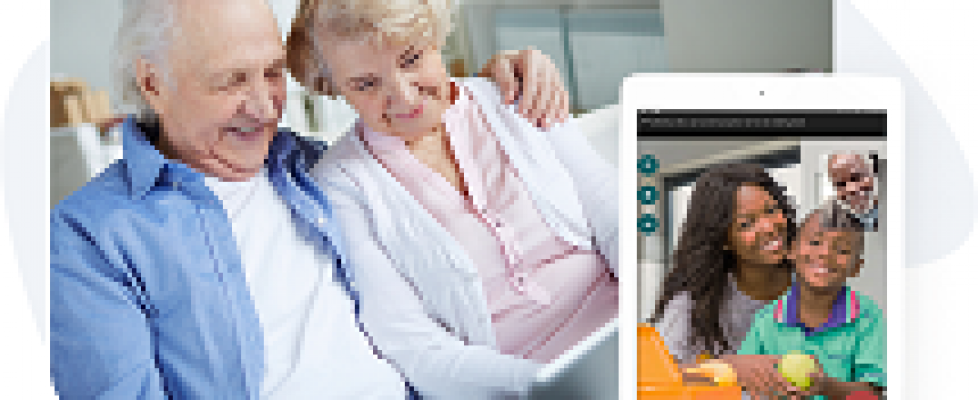3 Virtual Care Capabilities Every Home Health Agency Needs in 2022
By Jack Silverstein | August 13, 2021
National home health spending ballooned past $110 billion in late 2020, and with nearly 90% of Americans aged 50 and older wanting to age in place, the importance that home health providers hold within the health care continuum continues to rise.
For home health agencies, this steady growth of in-home care demands steady investment into staffing, with a focus on outcomes. This is where virtual care capabilities can help. Here are three virtual care capabilities that every agency needs for the remainder of 2021, and into 2022: remote patient monitoring, telehealth and remote diagnostics.
Remote patient monitoring
Part of the increase in desire for care in the home this past year is the desire to avoid entering a doctor’s office. While the home health boom began prior to COVID, the pandemic accelerated and deepened that trend. There are more reasons than ever for a senior to want or need to receive care in the home. For home health to successfully deliver that care, agencies should have remote access to a patient’s vitals.
“Maybe you’re coming to a house once a week, or even once a month, but you’re not there every day with the patient,” says Kathryn Gray, senior marketing manager with McKesson Medical-Surgical. “Remote patient monitoring (RPM) allows you the ability to monitor certain biometric parameters of patients with chronic conditions,” such as hypertension, diabetes, COPD or congestive heart failure.
By providing patients with connected devices that automatically send data when they are used, home health providers can monitor vitals and set notifications for when a patient falls out of range. The home health agency can deliver these devices to the patient and ensure that the patient knows how to use them. Examples of these tools include a web-connected scale, blood pressure monitor, pulse oximeter, spirometer or glucometer
“You are collecting that data remotely so you have the ability to monitor how they’re doing,” Gray says. “That way, you can intervene more quickly, adjust the care plan as needed and help to keep them from being admitted to the hospital or the ER. You’re really looking to improve outcomes and react more appropriately.” These tools can also help with patient satisfaction and help drive referrals.
Telehealth
One of the most important things for home health providers to bear in mind about technology is that many of these technologies intersect and play off of each other. The value of remote patient monitoring increases exponentially when an agency has telehealth capabilities, too.
“Telehealth dovetails nicely with remote patient monitoring,” Gray says. “If you’re monitoring a patient and find their numbers are out of range, or get a notification, you want to reach out to that patient by phone. You can tell a lot more with a video call and the ability to actually see the patient and their surroundings.”
“Having telehealth as part of remote patient monitoring can be very valuable for you to connect with your patients,” Gray says. Video discussions can allow you to respond more quickly and reduce the times that an agency has to send someone into the house. This can help reduce cost, and helps during times of staffing shortages. When a home health provider is in the home, telehealth can allow for a video-conference with a doctor or specialist.
“Telehealth is just another tool to help stretch your team farther while providing better care,” she says.
Remote diagnostics
Through connected diagnostic devices in a portable kit, agencies can help facilitate a remote diagnostic exam between doctors and patients. Kits usually consist of an otoscope, stethoscope, pulse oximeter and high-resolution camera, but can be configured to the patient’s needs. Devices connect to a laptop or tablet and have telehealth capabilities built in.
“With a remote diagnostic kit, a home provider has the ability to help facilitate a virtual exam between the patient at home and the doctor back in the office,” Gray says. The doctor can hear the heart, listen to the lungs, see in the throat or ear and talk to the patient. This capability enables the home health agency to help get care to the patient more quickly and reduce the need to get the patient into the doctor’s office.
The problem, of course, is that technology reimbursement is a moving target. But home health agencies that are proactive in their use of technology could reap operational efficiencies as well as a reduction in readmissions, gaining better outcomes, improved patient satisfaction and referrals, Gray says.
“Reimbursement with all of this varies by state and insurance provider,” she says. “It is always the recommendation that you consult your payers to make sure you know where you’re getting reimbursed and where you’re not getting reimbursed. You just really have to check.”

